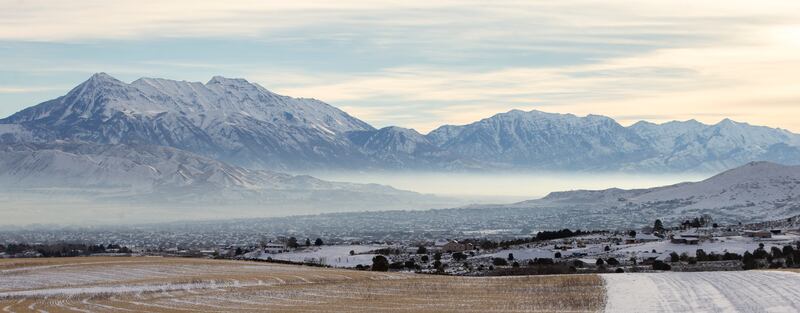Winter in Utah brings two certainties: skiing and inversions. Greatest snow on earth. Worst air. Well, not quite, but still pretty bad. If you’re not a skier there is always hope for you. Unfortunately, there is no hope for inversions.
What I mean is this: I often hear people ask “What can be done to stop these terrible inversions?” The answer is nothing. I’m not a defeatist but I am a realist, and what I know is inversions are a factor of geography and meteorology. Until we can either tear down the mountains or build giant fans to disrupt laws of nature, we are going to be stuck with inversions. But being stuck with inversions does not mean we have to be stuck breathing gunky air.
I’m no meteorologist but here is what I learned in grade school: Under normal conditions, air circulates as warm air near the ground rises, cools, and falls. In an inversion, the layers of air become inverted with the cold air near the ground and the warm air above. That layer of warm air is like a lid over the basin we live in, trapping the cold air near the ground and normal air circulation does not occur. Inversions are natural and cannot be controlled, but what is unnatural and unhealthy are the emissions that also become trapped under that lid. And while inversions cannot be controlled, what we put into the air can be.
Health is certainly the most important and pressing issue around air quality. But it is not the only issue. Improving our air is critical to maintaining our quality of life and community prosperity. Take corporate recruitment as an example. Over the past decade, our state has benefited from investment and job creation from companies such as Boeing, Goldman Sachs and Adobe. These companies and many more come to Utah because of talented workforce, low cost of doing business, market access and world class recreation. Poor air doesn’t just hinder the views of our beautiful mountains, it hinders our ability to keep businesses and jobs coming to our state.
Just as all of us contribute to emissions that lead to poor air quality during inversions, we all have an opportunity and responsibility to make a difference. Data shows that the largest source of the problem comes out of vehicle tailpipes. Purchasing Tier 3 fuel for our cars makes a big difference, reducing pollution by up to 80%. Kudos to the local refiners and retailers who have recently made this option available. We can reduce vehicle emissions even further through trip-chaining, car-pooling and eliminating idling.
Employers and business owners can encourage and empower their employees by facilitating telecommuting and flexible work schedules, incentivizing transit use and encouraging emission-free transportation. Business can also reduce their own emissions by improving insulation, lighting and other energy saving practices.
We may not be able to change our geography, but we can make special efforts to reduce pollutants released during inversions.
During the month of February, when inversions are most common, businesses and individuals can participate in the Clear the Air Challenge led by UCAIR (the Utah Clean Air Partnership). This month-long competition encourages Utahns to reduce vehicle emissions by choosing alternatives to their regular commute. Over the past 10 years of the challenge, participants have eliminated over 15 million miles and reduced over five thousand tons of emissions.
We may not be able to change our geography, but we can make special efforts to reduce pollutants released during inversions. With individuals and businesses taking ownership of the solution to our air quality challenges, together we can reduce the impacts of inversions, improve our air quality and enhance our collective prosperity.
Derek Miller is the president and CEO of the Salt Lake Chamber.


